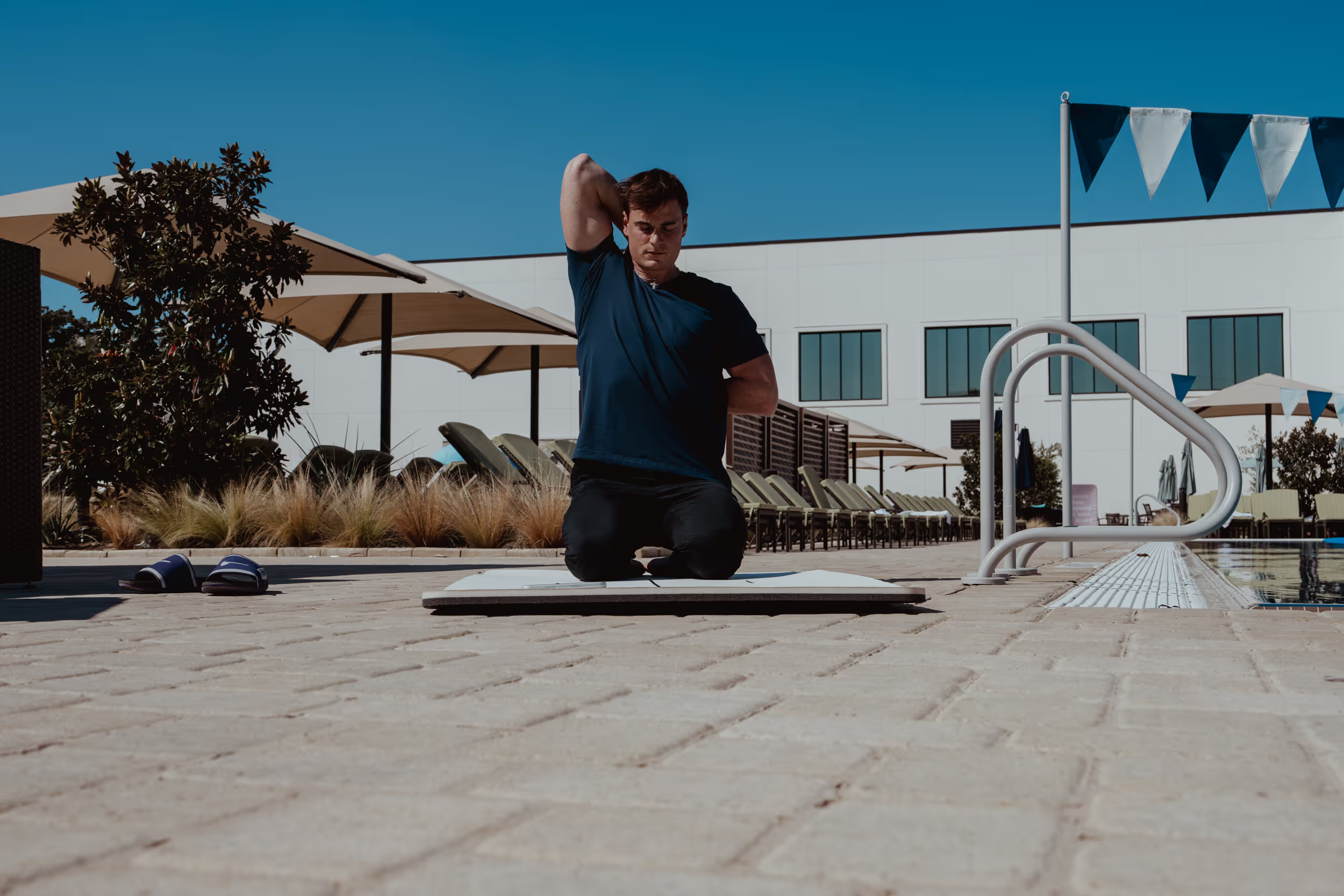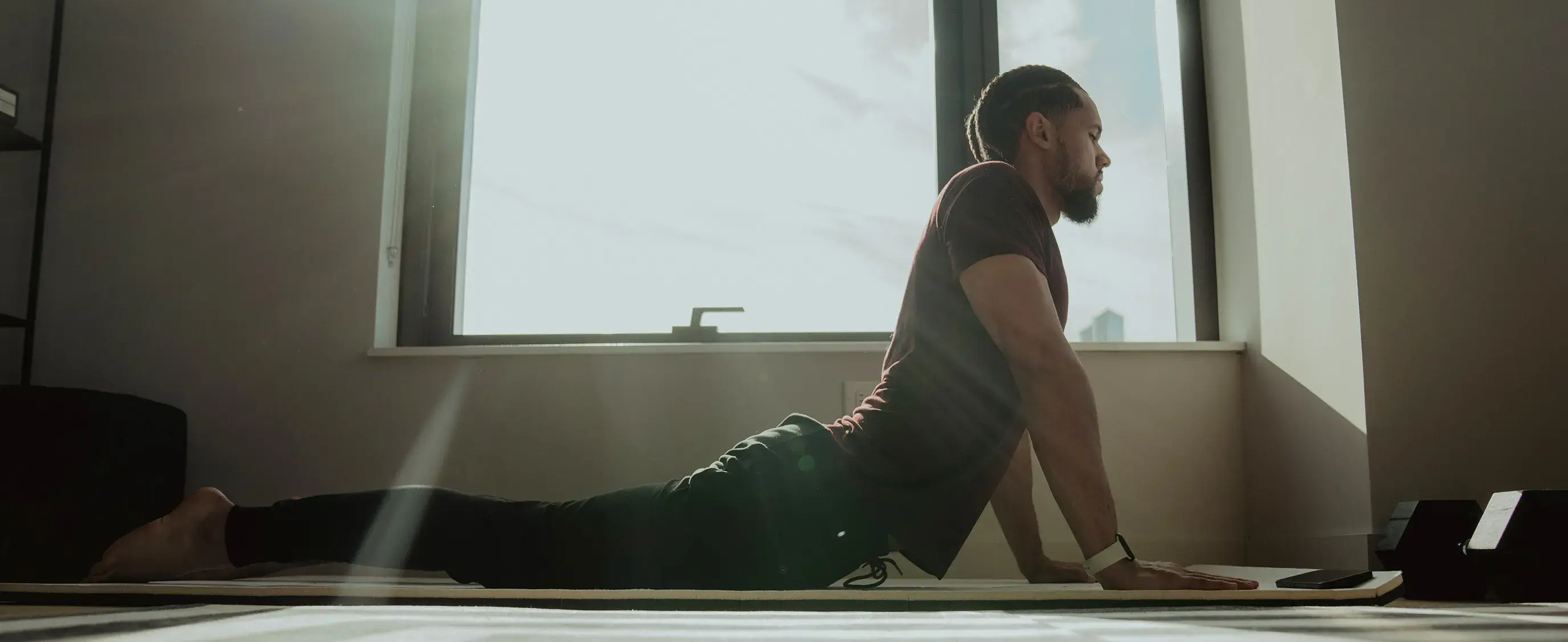Waking up with a sore neck, freezing when you turn, or feeling tight after a long day at the desk are all too familiar and can stop you in your tracks. In stretching routines for stiffness, understanding how poor posture, muscle strain, pinched nerves, trigger points, sleeping position, and inflammation affect the cervical spine helps you target the root cause and restore range of motion. This guide explores what causes a stiff neck, how to fix it, and the Exercises for Stiff Neck and Shoulders to relieve pain, improve mobility, and prevent stiffness from coming back.
To help with that, Pliability's mobility app offers guided stretches, short mobility drills, and posture checks that make it easy to find and release tight muscles, protect nerves, and build lasting neck resilience; ready to try a plan you can do at your desk or in bed?
What Causes a Stiff Neck and How It Develops
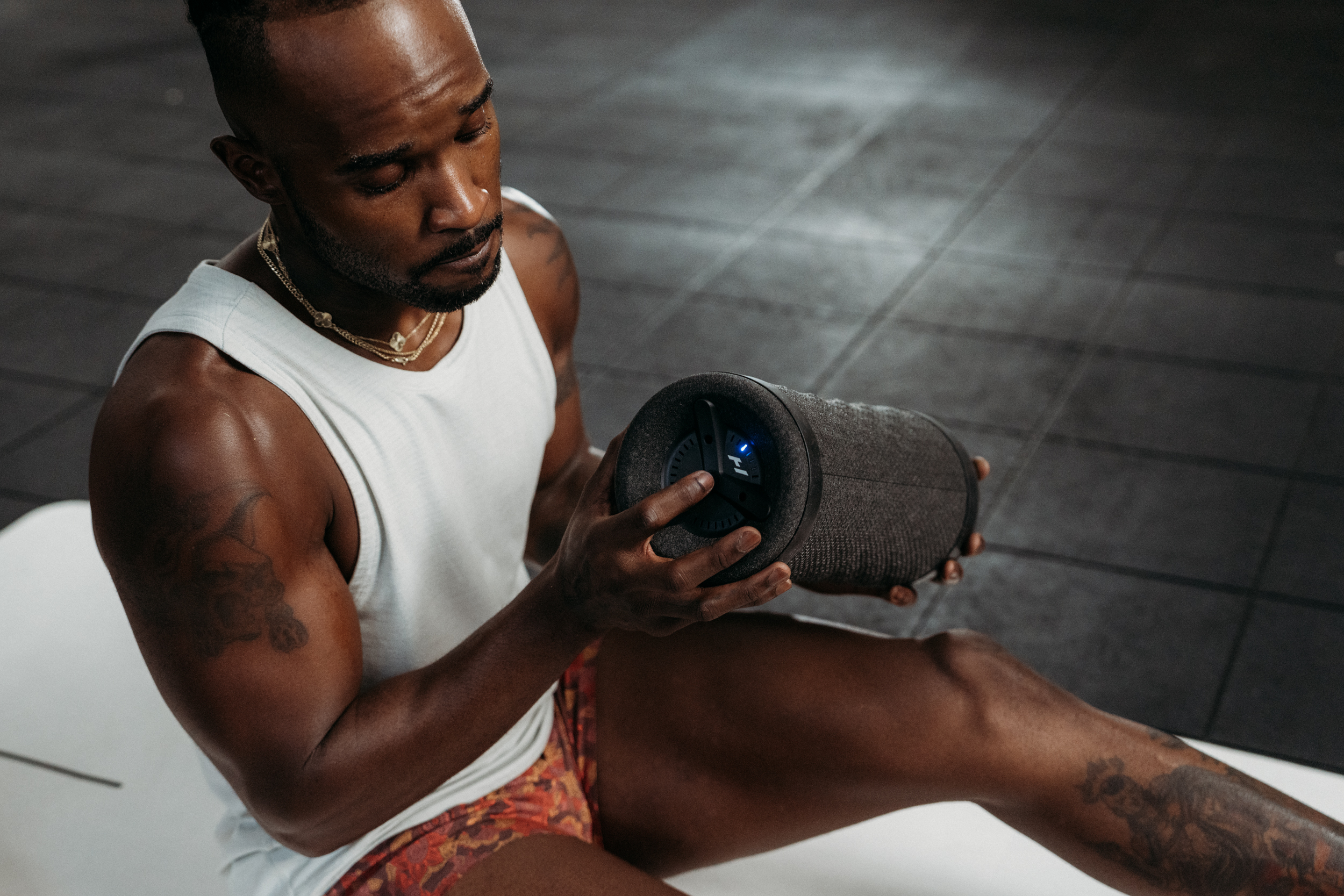
Neck stiffness is a broad term for any condition that makes it difficult to move or use your neck. It’s a common symptom of various health conditions and issues. The neck can tighten, ache, or lock up when one or more of its parts are irritated, strained, or injured, and that reaction limits motion and causes discomfort.
Neck Anatomy Made Simple
- Vertebrae: The bones in your spine are called vertebrae. The medical term for your neck is your cervical spine — the first seven vertebrae in your spine.
- Muscles: Twenty neck muscles support your neck and let it move.
- Ligaments: Ligaments in your neck hold your vertebrae together and keep your neck stable.
- Disks: Shock absorbers between your vertebrae.
- Nerves: Eight pairs of nerves in your neck help you feel and move muscles in your neck, shoulders, arms, and hands.
Anything that affects any of these parts can lead to neck stiffness. Some people experience a temporary episode that resolves on its own; others have stiffness that recurs frequently enough to be considered chronic.
How Severe Neck Stiffness Can Be and What to Watch For
How dangerous a stiff neck is usually comes down to other symptoms you have at the same time. If you wake up stiff after an awkward nap on the couch, the cause is likely a short-term muscle issue and will improve. If you have a stiff neck, fever, severe headache, and nausea, an infection like meningitis could be the cause and requires urgent care.
Visit a healthcare provider if you have a stiff neck and are concerned that you may have a serious issue. Trust your body and listen to what it’s telling you.
What a Stiff Neck Feels Like
You will find it hard to turn or tilt your head when your neck is stiff. Pain often accompanies the tightness. You may also notice numbness or tingling that radiates into the shoulders or arms when nerves are affected. Do you experience pins and needles, or does weakness appear in your arm? Those signs increase the likelihood of nerve compression or radiculopathy.
Most Common Causes: Muscle Strain and Soft Tissue Sprain
By far the most common cause of a stiff neck is a muscle strain or soft tissue sprain. Everyday actions are often the culprit. Sleeping with the neck in an awkward position, falling or experiencing a sudden impact that pushes the head to one side, and repetitive turning of the head during activities such as swimming the front crawl stroke can all strain neck muscles.
Slouching while viewing a computer monitor or looking down at a mobile phone for long stretches creates extra load on the muscles behind the neck and leads to fatigue and pain.
The Levator Scapulae: A Small Muscle That Causes Big Trouble
The levator scapulae is located at the back and side of the neck, connecting the cervical spine to the shoulder blade. It is mainly controlled by the third and fourth cervical nerves, C3 and C4. That muscle often tightens after:
- Awkward sleep positions
- Sports impacts
- Repetitive motions
Because it links neck and shoulder mechanics, strain here frequently produces a stiff and painful neck.
How Modern Habits and Screen Use Make Neck Stiffness Worse
Do you spend hours looking down at a phone or hunched over a laptop? Excessive screen time and sustained forward head posture, sometimes referred to as text neck, can increase the load on the neck muscles. The head weighs about 12 pounds, and leaning it forward multiplies the strain on the posterior neck.
“It’s much easier to hold a bowling ball closer to one’s chest than to keep the ball extended in front of you with one arm,” Dr. Rodericks says. “The arm will strain after a few minutes. You don’t want to keep your head craned forward for that same reason. Those muscles behind the neck are holding on for dear life.”
Muscle and Ligament Conditions That Cause Stiffness
- Neck sprains and strains.
- Sleeping in an unusual or uncomfortable position.
- Looking at screens for too long, especially with the head tilted down.
- Tension and tightness from stress and anxiety.
- Cradling a phone between the ear and shoulder, which holds the neck in an abnormal position.
These problems create local inflammation, trigger points, and tight bands of muscle that limit motion.
Trauma and Sudden Injury as Causes
Car accidents, sports injuries, and whiplash can stretch or tear ligaments, overload muscles, and injure joints. When stiffness appears right after trauma, the cause is usually clear. If stiffness begins without an apparent reason, the origin may be harder to identify, but trauma should remain on the list of possibilities.
Less Common Cervical Spine Problems That Produce Stiffness
- Cervical herniated disc: The outer layer of a disc can break down and allow inner material to press on nerves or inflame nearby tissue.
- Cervical degenerative disc disease: Discs lose hydration and height with age, which can increase pressure on facet joints, nerves, and soft tissues.
- Cervical osteoarthritis: Wear in the facet joints can produce pain, stiffness, and reduced neck motion. Degenerative changes may accompany spinal stenosis and bone spurs.
Considering Serious, Rare Causes
Spinal stenosis, nerve compression, and radiculopathy can cause stiffness plus neurological symptoms. In rare cases, an infection or tumor can appear with neck stiffness. These causes are uncommon but must be considered when symptoms are unusual or severe.
Life Changes and Routine Shifts That Trigger Neck Problems
Beginning college or starting a new job often pushes people into long hours in awkward postures, reading or leaning into screens. Sudden changes to work-at-home setups during the COVID-19 pandemic raised the incidence of neck stiffness when people improvised desks and chairs.
New parents frequently hold and lift infants in ways that overload neck and shoulder muscles. Significant life changes can alter daily posture and routines, leading to persistent neck tension.
When to See a Healthcare Provider and What They Will Look For
If stiffness is mild and improves with rest, heat, movement, and posture correction, home care may be sufficient. Seek care promptly if stiffness develops after trauma, if you experience a fever, or neurological signs such as:
- Worsening numbness
- Tingling
- Weakness
- Changes in bowel or bladder function
- If pain is severe and unrelenting
A clinician will assess for nerve compression, range of motion, signs of infection, and determine whether imaging or specialist referral is necessary.
Related Reading
- Why Do I Have Trouble Walking After Sitting
- Why Am I Sore After Stretching
- What Do Tight Muscles Look Like
- Why Do Muscles Get Tight
- Why is Hip Mobility Important
- How Can Stiff and Tight Muscles Result in Back Pain?
- Why is My Back So Stiff
- Why Are My Shoulders So Tight
- How to Prevent Morning Stiffness
How to Fix a Stiff Neck and Prevent It from Coming Back
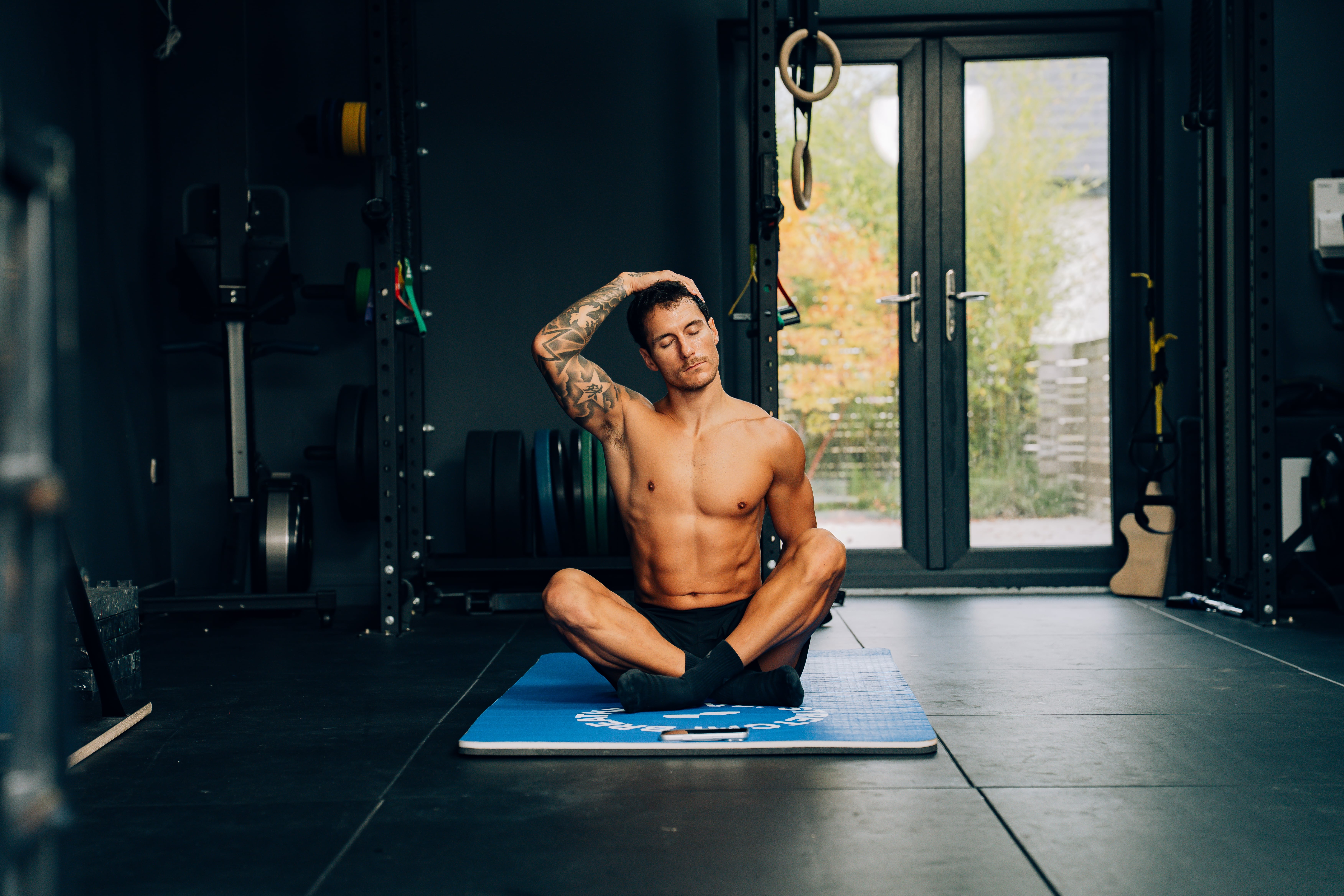
Have you been looking down at a phone or laptop for hours? Start with simple steps that often prevent stiffness from worsening:
- Alternate short breaks every 20 to 30 minutes.
- Sit up straight, roll your shoulders back and down, and gently tilt your head from side to side, then forward and back, for a few repetitions.
- Apply ice to a painful spot for up to 15 minutes to reduce inflammation, or use heat for up to 15 minutes to relax tight muscles.
- Use a thin barrier between the skin and the pack to avoid burns.
- Try a menthol or lidocaine topical gel or patch for targeted numbness, which can be worn for up to 12 hours.
- Use over-the-counter pain medicine such as acetaminophen at the labeled dose if needed.
What Actually Causes a Stiff Neck, and Why It Happens
Neck pain and stiffness come from several common problems. Muscle strain resulting from poor posture or repeated neck bending can lead to muscle tension and tightness. Tech-related posture often stresses the cervical spine and shoulder muscles. Sleeping in an awkward position can strain neck muscles overnight.
Mechanical and Overuse Causes
Sudden forces, such as whiplash or overuse and repetitive motion, can cause a muscle sprain. In some cases, a pinched nerve, arthritis in the cervical spine, or a degenerative disc can produce stiffness and pain that radiates into the arm or fingers. Inflammation, swelling, and trigger points in the neck and upper back also limit the range of motion.
Set Up Your Desk Right So Your Neck Does Less Work
How high is your screen? Raise external monitors so that the top third of the screen is at eye level, and place your keyboard so that your forearms are roughly parallel to the floor.
Laptops keep your head and shoulders locked into one position and often force you to look down; use an external monitor and keyboard when possible. Sit in an adjustable chair with your feet flat on the floor and your back supported so that your spine carries weight evenly. Minor adjustments to your posture can help reduce ongoing muscle strain and prevent recurring stiffness.
Sleep Smarter: Simple Pillow and Position Hacks for Less Morning Pain
Lie on your back or side, supporting the natural curve of your neck. When lying on your back, place the bottom edge of the pillow between your shoulder blades and the top under your head so that your neck does not sink.
Optimizing Sleep Posture
A curved travel pillow can keep the neck from collapsing. When lying on your side, hug a body pillow to keep your lower spine aligned. Place one leg over the pillow and the other leg underneath to maintain hip and pelvic alignment. These placements reduce pressure on the cervical joints and soft tissues.
3 Posture Builders You Can Do Anywhere
Hold each position for about 30 seconds and repeat two to three times.
- Low rows: Keep shoulders down. Squeeze the shoulder blades together as if holding an imaginary pencil between them. Pull the blades back and down, not up toward the ears.
- Chin tucks: Look straight ahead and push the chin directly backward so a second chin appears. Keep ears in line with the shoulders.
- Chest stretches: Lean back over an exercise ball or a firm rolled towel placed along the spine. Let your arms fall to the sides and feel a stretch across the front of your chest.
Hands-On Relief: Massage, Massage Tools, and What They Do
Massage, including a qualified therapist or a massage gun, can break up knots and reduce muscle tension. Use massage as part of a comprehensive treatment plan, rather than as the sole solution. If you continue to sit in awkward positions or have muscle imbalances, tight tissue will persist unless the aggravating behavior is changed. Short targeted sessions often help mobility and reduce pain.
Manual Care: What to Know About Chiropractors and Gentle Joint Work
A licensed chiropractor or manual therapist can perform gentle joint releases and soft tissue work to ease stiffness. Avoid high-speed adjustments to the neck because sudden force can compress arteries in the neck and, in rare cases, increase stroke risk. Ask your provider about low-force techniques and request a clear explanation of the intended benefits and any associated risks before undergoing treatment.
At Home Relief Tools, Med Options, and Stress Control
Use ice for swelling and heat for tight muscles, each for up to 15 minutes with a barrier to protect skin. Topical analgesics with menthol or lidocaine can provide surface relief. Oral options include acetaminophen for pain relief. Non-steroidal anti-inflammatory drugs (NSAIDs), such as ibuprofen or naproxen, reduce inflammation.
Consultation and Stress Reduction
Follow the package directions and consult your pharmacist or clinician if you have medical conditions or are taking other medications. Add stress reduction practices such as short guided meditation sessions, deep breathing, or gentle yoga to ease muscle guarding linked to anxiety.
When Over-the-Counter Medicine is Not Enough, and When to See a Clinician
If stiffness does not improve after a few days of self-care, or if pain is severe, wakes you from sleep, or limits basic tasks, see a clinician. Seek urgent care if you develop:
- Numbness
- Tingling
- Weakness in an arm or hand
- Loss of coordination
- Severe headache
- Fever
- Pain began after a fall or trauma
A physical therapist can provide a personalized program of exercises, manual therapy, and postural retraining to address specific needs. A physician can evaluate for nerve compression, arthritis, or other structural issues and recommend imaging when necessary.
Questions to Help You Decide the Next Step
Does the pain radiate into your arm or cause numbness? Did the problem start after a fall or sudden force? Have the symptoms lasted more than a week despite at-home care? If you answer yes to any of these, schedule a medical assessment to receive targeted treatment and prevent chronic stiffness.
Related Reading
- Stiff Feet in the Morning
- How Can Poor Posture Result in Back Pain?
- How Long Stiff Neck Last
- Stiff Feet in the Morning
- Why Does My Knee Feel Stiff
- How to Treat Stiff Fingers in the Morning
- Joint Stiffness in the Morning
- What to Do for Tight Muscles
- Why Are My Calf Muscles So Tight
- How to Loosen Tight Muscles in Legs
- How to Loosen Tight Lower Back Muscles While Standing
When a Stiff Neck is Serious and Needs Medical Attention
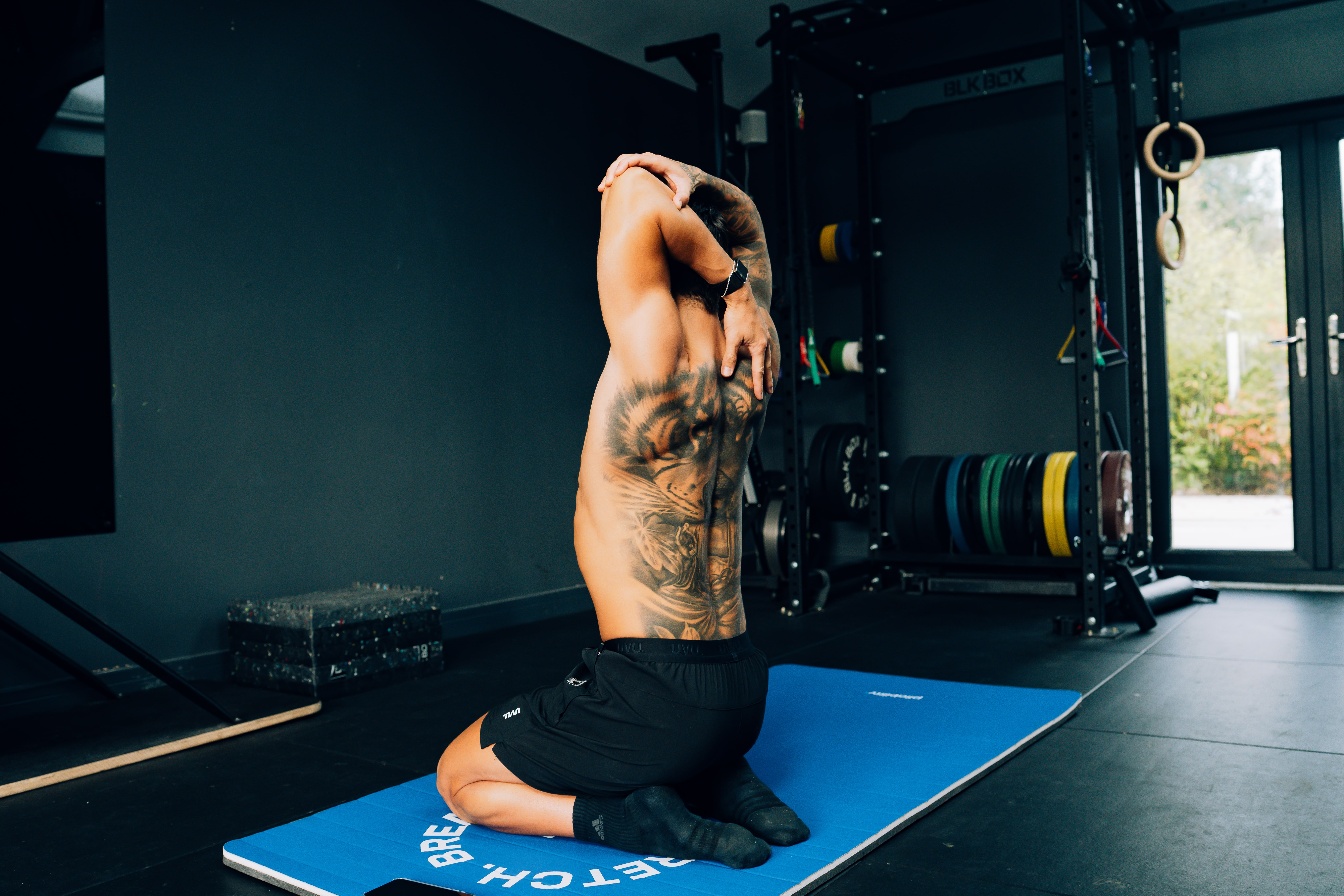
Ask yourself: Is this stiffness different from a night of poor sleep or a long day at a desk? Routine causes of a stiff neck include:
- Muscle strain
- Poor posture
- Sleeping position
- Dehydration
- Stress
Warning Signs of Serious Complications
- Persistent severe pain
- Numbness or tingling
- Fever
- Confusion
- Sudden weakness
- Trouble walking
- A headache that feels unlike anything you’ve had before
If any of those appear, treat the situation as potentially serious and act quickly.
Signs of Infection or Inflammation: Could It Be Meningitis or an Abscess?
Fever with neck stiffness and chills can signal an infection of the membranes around the brain and spine. Look for a very severe headache that is new or different, nausea and vomiting combined with neck stiffness and fever, sensitivity to light, seizures, confusion, or any change in mental state.
These symptoms suggest meningitis or a spinal infection and require immediate medical evaluation rather than home stretching or massage.
Neurological Warning Signs: Numbness, Tingling, and Weakness
Do you feel pins and needles, numbness, or a loss of strength in your arms, shoulders, or hands? Those signs can mean a compressed nerve or spinal cord involvement. Pay attention to difficulty with:
- Coordination
- Balance
- Walking
Conditions that cause these symptoms include cervical radiculopathy from a herniated disc, bone spurs pressing on nerves, arthritis, or degenerative changes in the cervical spine. Any progressive numbness, new weakness, or changes in gait should be assessed urgently.
Severe or Unusual Pain: When Vascular or Disc Problems Are Possible
Sudden, intense neck pain, especially if it starts with neck trauma or severe head movement, can point to a vascular problem such as a cervical artery dissection. Pain that radiates from the neck down the shoulder or arm often indicates a herniated disc pressing on a nerve root.
If pain is severe, different from past episodes, or accompanied by dizziness, visual changes, or fainting, seek immediate medical care.
Trauma and Structural Damage: Recent Injury Changes How You Respond
A car crash, whiplash, a fall, or any blow to the head or neck raises the chance of:
- Fractures
- Ligament injury
- Spinal instability
Avoid aggressive stretching or manipulation after trauma. Immobilize the neck if you suspect a fracture and get emergency medical evaluation to rule out structural damage to vertebrae or the spinal cord.
Chronic or Worsening Stiffness: When Degeneration, Tumor, or Ongoing Infection Might Be Present
Longstanding neck stiffness that progressively worsens, or stiffness that does not respond to reasonable self-care over weeks, can reflect degenerative disc disease, osteoarthritis, bone spurs, a slowly expanding mass, or an infection near the cervical spine. Watch for:
- New neurological signs
- Unexplained weight loss
- Night pain that wakes you
A clinician may order imaging or labs when symptoms persist or change.
What to Do If You Notice Red Flag Symptoms
High fever with neck stiffness, severe new headache, altered mental status, seizures, uncontrolled vomiting, sudden weakness, loss of feeling, or trouble walking. If symptoms follow trauma, get urgent evaluation for possible fracture or spinal cord injury. Tell clinicians:
- When the symptoms started
- How they progressed
- Whether any recent injury, infection, or medical condition exists.
Avoid vigorous stretching, heavy lifting, or massage until a healthcare professional clears you for these activities. Call emergency services immediately if you develop sudden paralysis, difficulty breathing, or collapse.
When to Worry About Stiff Necks
While most stiff necks result from muscle strain, poor posture, or sleep deprivation, unusual or worsening symptoms should not be ignored. Act promptly when red flags appear so that clinicians can rule out meningitis, spinal cord compression, vascular injury, or other severe conditions.
Improve Your Flexibility with Our Mobility App Today | Get 7 Days for Free on Any Platform

Pliability offers a fresh take on yoga, designed for individuals who seek performance, recovery, and practical flexibility. The app provides an extensive library of high-quality videos that teach:
- Mobility drills
- Corrective stretches
- Soft tissue work to enhance the range of motion and alleviate pain
Adaptive Mobility and Injury Prevention
Daily updated custom mobility programs adapt to your schedule and goals, helping you manage stiffness, aid recovery after workouts, and lower the risk of overuse injuries. A built-in body scanning feature identifies asymmetries and mobility limitations, enabling the program to target the specific areas that need improvement. Want to try it?
Sign up today for 7 days absolutely free on iPhone, iPad, Android, or on the website to improve flexibility, aid recovery, reduce pain, and enhance range of motion with guided mobility work.
How Pliability Helps a Stiff Neck Move Better
Do you notice neck stiffness after training, long drives, or late-night work? Pliability breaks those patterns into specific movement deficits. The app pairs targeted neck mobility sequences with thoracic mobility and shoulder mobility routines to remove mechanical restrictions that tighten the upper traps and levator scapulae.
Guided Movement for Pain and Tension
Video coaching shows joint-friendly ranges, progressive loading, and soft tissue techniques that reduce muscle strain and myofascial trigger points. Programs include recovery days, active release options, and guided breathing to calm tension-driven neck pain. Which movement feels tight for you right now?
What Causes a Stiff Neck: Mechanical and Medical Causes Explained
Muscle strain and overuse often manifest as tightness after a sudden, awkward movement or after repetitive tasks, such as:
- Texting
- Desk work
Poor posture, such as a forward head position, increases the load on the cervical joints and upper back muscles. Sleeping in an unsupportive position and using an unsupportive pillow can lead to morning stiffness.
Traumatic and Degenerative Causes
Acute trauma, like whiplash, irritates ligaments and discs and causes a limited range of motion. Degenerative changes such as cervical spondylosis, osteoarthritis, and degenerative disc disease narrow joint spaces and can produce chronic stiffness. Herniated discs or nerve compression can produce pain that radiates into the shoulder or arm, accompanied by numbness or weakness.
Referred Pain and Urgent Concerns
Myofascial pain and trigger points in the upper back and shoulders refer pain into the neck. Systemic inflammation and less common causes, such as infection or meningitis, present with severe pain accompanied by fever or neurological signs, and require urgent care. How long has your stiffness lasted, and what other symptoms do you experience with it?
Simple Mobility and Stretching Routines to Relieve Neck Stiffness
Start with gentle active moves before stretching. Perform chin tucks to restore cervical alignment: sit tall, draw your head straight back, hold for 5 seconds, and repeat 8 to 10 times. Add controlled side bends: tilt the ear toward the shoulder slowly, hold for 20 to 30 seconds, and repeat three times per side.
Stretch the upper trapezius by sitting on one hand and tilting the head away, keeping the chest open. Use the levator scapulae stretch by rotating your head 45 degrees, then looking down. Hold for 20 to 30 seconds. Combine neck work with thoracic extension drills over a foam roller or sitting thoracic rotations to remove compensatory stiffness. Include scapular stability exercises, such as banded rows and wall slides, to reduce the load on the neck.
If you feel radiating numbness or sharp shooting pain, avoid aggressive stretching and seek assessment first. How many of these can you try in one session?
Soft Tissue, Neural Mobility, and Recovery Practices That Work
Self-massage and targeted soft tissue work reduce myofascial tightness that limits neck rotation. Use a lacrosse ball or a tennis ball to work the upper back and the border of the shoulder blade to ease referred pain.
Long-Term Prevention and Self-Care
Neural gliding exercises can help alleviate pinched nerve symptoms, but should be performed slowly and without pain. Implement consistent sleep hygiene practices and make ergonomic adjustments at your desk to prevent recurrence. Hydration, slow progressive loading, and active recovery prevent stiffness after exercise and extended travel.
When stiffness follows a specific injury or is accompanied by weakness, consider evaluation for cervical radiculopathy or structural problems.
Why Personalized Programs and Body Scanning Matter for Neck Health
A one-size-fits-all stretch routine overlooks asymmetries and compensations that perpetuate pain. Body scanning reveals side-to-side differences, restricted joint angles, and muscle imbalances, so programs focus on proper movement limits. Daily updated sessions adjust volume and intensity to match:
- Soreness
- Training load
- Recovery needs
Progress is measurable with movement benchmarks, so stiffness becomes a tracked metric rather than an occasional annoyance. Would you prefer a routine that adapts to your recovery day or one that pushes through pain?
Related Reading
- Can Tight Hips Cause Knee Pain
- How to Loosen Tight Forearm Muscles
- Why Do My Legs Feel Tight and Heavy
- Why Does My Forearm Feel Tight
- How to Loosen Tight Jaw Muscles
- Why Do My Hands Feel Tight
- How to Loosen Tight Hips and Lower Back
- How to Loosen Tight Scalp Muscles
